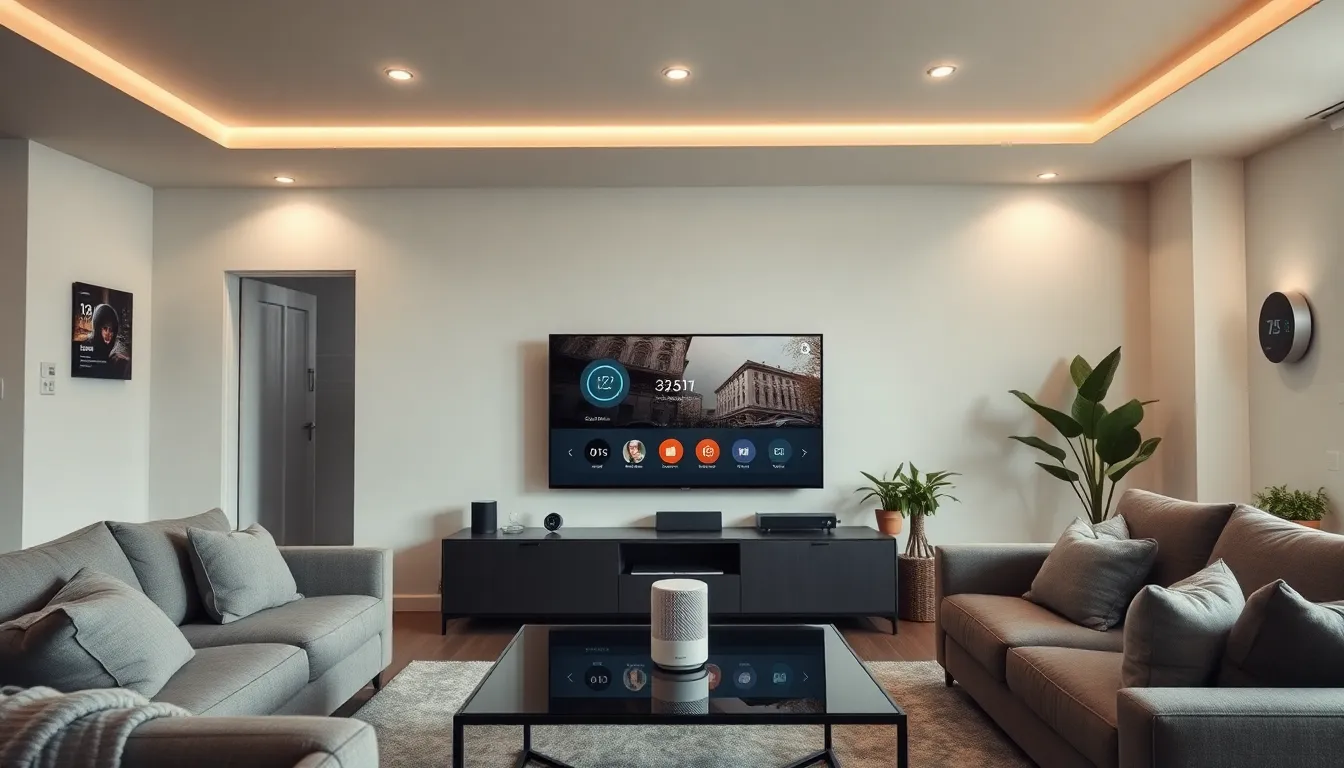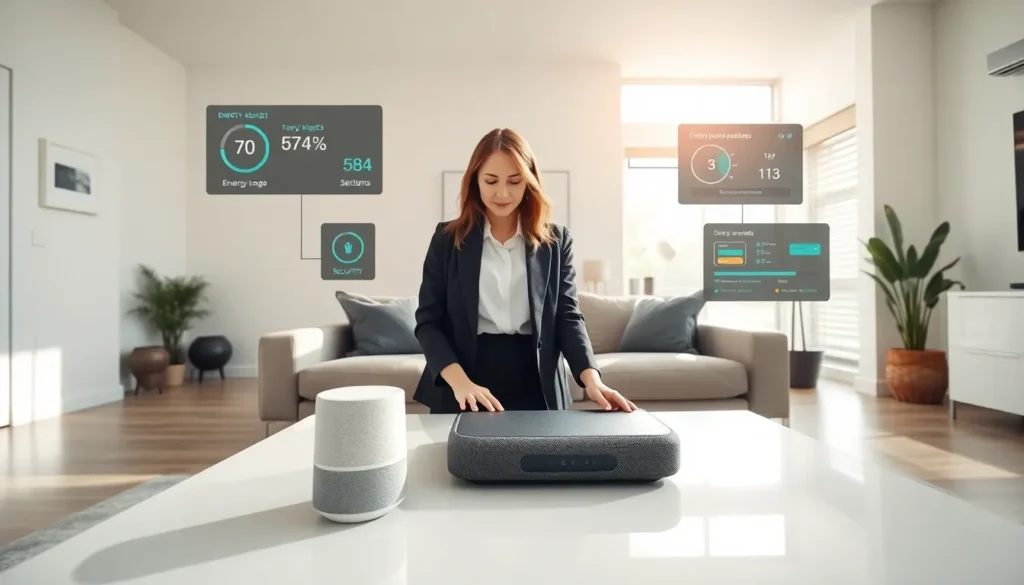Imagine living in a house that anticipates your needs, adjusts the temperature before you even feel a chill, and ensures your home is safe while you binge-watch your favorite series. Welcome to the world of smart living and technology, where homes aren’t just buildings, they’re intelligent spaces enhancing our lives. So, grab a cup of coffee, settle in, and let’s jump into how this tech revolution is not only transforming our living conditions but also making our lives more convenient, sustainable, and, dare I say, a little more futuristic.
Table of Contents
ToggleUnderstanding Smart Living

Defining Smart Living
Smart living isn’t just about having the latest gadgets cluttering your shelves: it’s about a lifestyle that integrates technology seamlessly into daily routines. It represents homes that are proactive, equipped with devices that communicate with each other to create an enhanced living experience. Imagine smart thermostats adjusting temperatures based on your daily patterns and smart lights that know when to dim based on the time of day. Simple, right? These little wonders redefine how people interact with their living spaces.
The Role of Technology in Modern Homes
In today’s homes, technology serves as a crucial backbone. From voice-activated assistants that can manage everything from shopping lists to controlling smart appliances, technology ushers in an era of unprecedented ease. Home automation systems allow for centralized control of lighting, heating, security, and even entertainment systems, providing users with a simplified approach to managing their environments. This innovation not only elevates comfort levels but also enhances the overall quality of life.
Advantages of Smart Living
Energy Efficiency and Sustainability
Smart homes are synonymous with energy efficiency. Utilizing devices designed to minimize waste, such as smart thermostats and energy-efficient appliances, households can significantly reduce their carbon footprint. For example, smart thermostats learn your schedule, ensuring that heating or cooling doesn’t run unnecessarily. Not only does this tech help save on utility bills, but it also promotes sustainable living, a win-win for both the wallet and the planet.
Convenience and Comfort
Can you imagine having your coffee brewing just as you wake up? That’s precisely what smart living achieves. With smart home devices, the mundane becomes effortless. It could be as simple as adjusting the lighting with a command or setting your home to preheat for dinner before you even walk through the door. The convenience offered by technology makes day-to-day tasks streamlined, making life smoother and more enjoyable.
Enhanced Security and Safety
Safety is always a priority, and smart homes deliver on that front too. Equipped with smart locks, surveillance cameras, and motion sensors, homeowners can monitor their property in real-time from their smartphones. This level of security reduces anxiety and ensures peace of mind. Also, features such as smoke detectors that send alerts to smartphones ensure that you’re always informed.
Key Technologies Driving Smart Living
Smart Home Devices
The heart of smart living is undoubtedly the devices themselves. Think smart speakers, robotic vacuums, smart refrigerators, and automated lighting systems. These devices not only enhance convenience but also bring an element of fun to home management. With compatibility across different systems, they can create a unified ecosystem within a household.
IoT and Connectivity
The Internet of Things (IoT) plays a pivotal role in smart living. This technology connects appliances, devices, and systems, allowing for communication and coordination. It enables homeowners to control devices remotely and receive alerts for various situations, such as when a door is left open or the refrigerator is malfunctioning.
Artificial Intelligence Applications
AI is the secret sauce that makes smart living feel truly innovative. It learns from user behavior to personalize experiences. For instance, AI-powered home assistants can suggest routines based on your preferences, making everyday life more intuitive and effortless.
Challenges of Smart Living and Technology
Privacy and Security Concerns
With great technology comes great responsibility, or at least, that’s the hope. But, smart living isn’t without its challenges. Privacy concerns loom as smart devices often gather personal data to enhance performance. Homeowners must be conscious of what information they share and ensure that they’re using secure networks to mitigate risks of cyber attacks.
Technological Dependence
While relying on technology can be beneficial, it also raises questions about dependence. What happens if your smart home system crashes? For many, the idea of losing control over basic functions can be daunting. There’s a delicate balance between enjoying convenience and becoming too reliant on technology.
Accessibility Issues
Finally, not everyone has equal access to smart technology. There’s a risk that low-income families could be left behind as smart devices can carry a hefty price tag. Societal disparities could widen if solutions aren’t found to make these technologies accessible to all.
Future Trends in Smart Living
Advancements in Home Automation
Looking ahead, advancements in home automation promise even greater interconnectedness among devices. Systems may become so intuitive that they preemptively respond to user needs. Imagine a smart kitchen that not only predicts what you might want for dinner based on your dietary preferences but also orders the ingredients on your behalf.
The Rise of Sustainable Technologies
The future isn’t just smart: it’s green. There’s a growing emphasis on developing sustainable technologies designed to reduce waste and minimize environmental impact. Expect to see more solar-powered gadgets and energy-efficient systems setting the standard for smart living.
Integration of AI and Machine Learning
Finally, as AI and machine learning continue to evolve, their integration into smart homes will deepen. Smart systems will adapt even more to user behavior, paving the way for personalized environments tailored to individual lifestyles.



